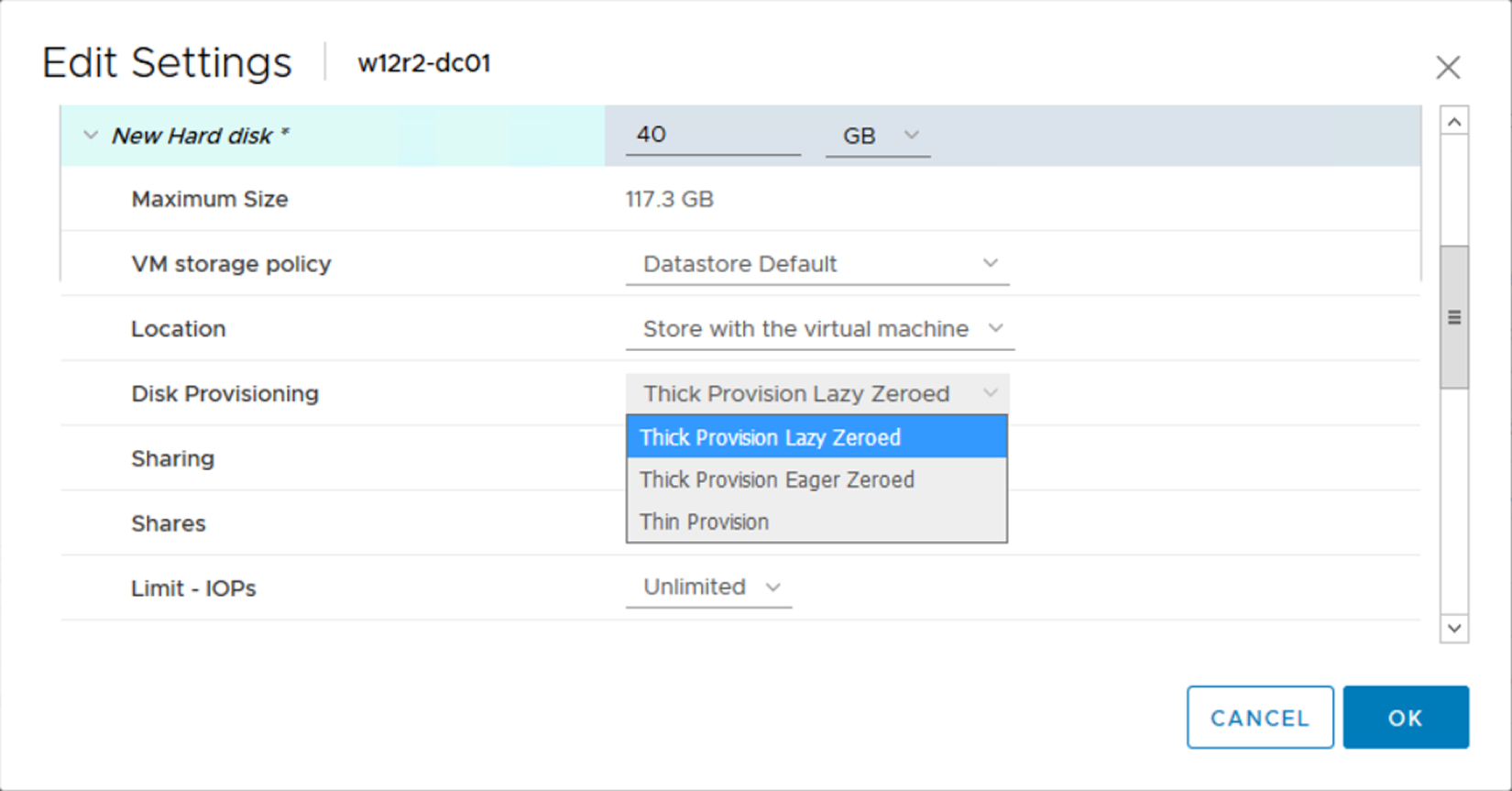A virtual disk stores the actual VM data and the VM can be configured to use a new disk, attach an existing disk, or map SAN LUN. A LUN to a VMFS map is referred to as a Raw Device Mapping (RDM) that points to the raw LUN. In this case, the .vmdk file (.vmdk files will be discussed later in the file structure) doesn't store data (data is stored on the LUN) but it contains only the mapping to the LUN disk information.
Virtual disks can be moved across different datastores connected to the host on which the VM runs. When a new disk is created, it can be provisioned in three different formats depending on the requirements:
- Thick provision lazy zeroed: The default format; space on the datastore is allocated when the VM is created and data on the physical device is not erased.
- Thick provision eager zeroed: The format used to support specific configuration, such as vSphere FT or some SQL installations; it allocates space on the datastore when the disk is created. As compared to lazy zeroed format, data on the physical device is zeroed out at creation time. Thick provision eager zeroed format takes a longer time to be provisioned.
- Thin provision: This is used to save space on the storage; it's the fastest method to create a new disk. This format doesn't allocate all the requested disk space at creation, but at the beginning, it only uses the space required by the initial operations of the disk, growing in size until the maximum configured size is reached.
The disk format of a VM can be changed using the vSphere Storage vMotion feature:

A VM disk can be configured in three formats
